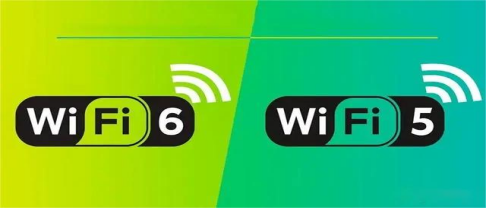As the world dives into the era of advanced wireless technology, the connection between Wi-Fi 6 and 5G has become a topic of immense interest. Both Wi-Fi 6 and 5G are poised to revolutionize the way we connect and communicate, offering faster speeds, lower latency, and improved overall performance. Although they are different technologies designed for different purposes, there are several key areas of coherence between these two powerful connectivity solutions.
While Wi-Fi 6 and 5G operate on different frequency bands, they both harness similar technologies, such as Orthogonal Frequency Division Multiple Access (OFDMA) and multiple input, multiple output (MIMO) antennas. Both technologies aim to maximize spectral efficiency, increase network capacity, and enhance user experiences by reducing interference and increasing data transmission rates.
Wi-Fi 6 and 5G are highly complementary technologies that can work in harmony to provide seamless connectivity. Wi-Fi 6 can handle high-capacity, short-range connections within crowded areas such as office buildings or homes, while 5G can provide broader coverage and support mobility for devices on the move. By combining these two technologies, users can experience uninterrupted connectivity across a wide range of environments.

Both Wi-Fi 6 and 5G have been designed with a focus on improving the user experience. 5G aims to deliver ultra-low latency and high-speed connections, which are essential for applications such as autonomous vehicles, remote surgery, and virtual reality. Wi-Fi 6, on the other hand, brings significant performance enhancements for dense environments, enabling smooth streaming, faster downloads, and better connectivity for IoT devices. Together, these technologies enhance overall user satisfaction.
Another key connection between Wi-Fi 6 and 5G lies in their emphasis on intelligent connectivity. Both technologies leverage advanced features like beamforming, which allows the signal to be directed towards specific devices, ensuring better signal strength and improved coverage. Additionally, both Wi-Fi 6 and 5G utilize sophisticated algorithms to optimize network connections, dynamically allocate resources, and prioritize critical applications, creating a more efficient and intelligent wireless ecosystem.
With the proliferation of Internet of Things (IoT) devices and the increasing demand for real-time applications, the convergence of Wi-Fi 6 and 5G becomes even more important. These technologies provide the necessary framework to support a wide range of use cases, including smart homes, smart cities, industrial automation, and immersive entertainment experiences. The seamless integration of Wi-Fi 6 and 5G ensures a reliable and efficient network infrastructure to facilitate the demands of our connected world.

Wi-Fi 6 and 5G are set to redefine global connectivity, transcending geographical boundaries and uniting people from around the world. With Wi-Fi 6 and 5G becoming increasingly widespread, individuals and businesses will benefit from a truly connected world, enabling collaboration, innovation, and growth on a global scale. This global connectivity will empower industries such as healthcare, education, transportation, and commerce, revolutionizing the way we work, learn, and communicate.
In conclusion, the connection between Wi-Fi 6 and 5G goes beyond their technical specifications. These two technologies, although designed for different purposes, exhibit remarkable coherence in terms of their technical similarities, complementary nature, enhanced user experiences, intelligent connectivity, convergence of applications, and global reach. As the world embraces a future where connectivity is paramount, the combination of Wi-Fi 6 and 5G technologies will lay the foundation for a seamless, efficient, and inclusive digital ecosystem.
 Trolink Joint With Tuya to Make Iot Benefit Every Family
Trolink Joint With Tuya to Make Iot Benefit Every Family
 5 Key Indicators for WiFi Module Selection You Have to Know !
5 Key Indicators for WiFi Module Selection You Have to Know !
 IOT module is the brain of smart products
IOT module is the brain of smart products
 What is the signal coverage range of the WiFi module chip?
What is the signal coverage range of the WiFi module chip?